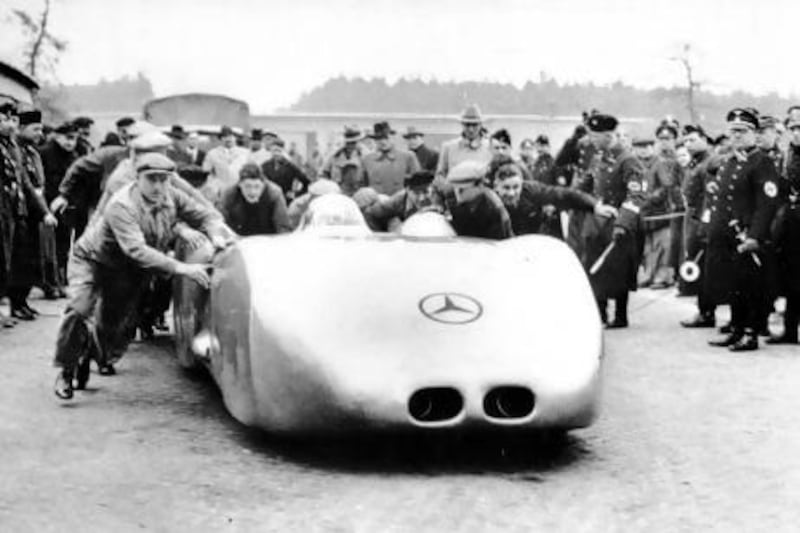When Ferrari's (as yet unnamed) "new Enzo" is unveiled this year, its performance statistics will no doubt read like telephone numbers. We're already hearing rumours that it will produce around 900hp from its hybrid powertrain and, at 300kph, it will probably be just getting into its stride - facts and figures that would have had us picking our jaws off the floor just a few years ago.
But whatever Ferrari, McLaren, Porsche and all the rest come up with in the future, it's unlikely any of them will manage to eclipse a 75-year-old Mercedes-Benz.
You read that right. In this very week, three quarters of a century ago, a converted Merc racecar set a world speed record for a public road that has since remained unsurpassed. When you hear people say "there is nothing new under the sun", you can believe it.
The Mercedes-Benz W125 Rekordwagen was a one-off special that had been converted from a Silver Arrows grand prix racer. Demonstrating an advanced understanding of aerodynamics, engineers fitted to its chassis an extremely streamlined bodyshell that enclosed the four wheels and was almost entirely flat except for a wedge-shaped, tapered tail end and the most minimal of cockpits. Its coefficient drag figure was an unbelievable 0.157 - half that of which manufacturers claim is aerodynamically superior, even today.
The body incorporated a radically scaled-down air intake on the front end and, as a result, the car only "breathed in" (through two small openings) the correct amount of air required for the MD 25 DAB/3-type engine to work. Engine cooling, on the other hand, was achieved without using fresh air; the radiator was embedded in a 500-litre chest that was filled with ice and water.
Underneath its slippery skin was a specially tuned, twin-supercharged, 5.6L V12 engine, the power output of which was some 736hp. This was a machine built with one express purpose: to be the fastest road car in the world. Sound familiar?
Rudolf Caracciola, who at that time was the lead driver for the Mercedes-Benz racing department, set out early on a cold January morning to a stretch of new autobahn road between Frankfurt am Main and Darmstadt. There, he hit a speed of precisely 432.692kph over a distance of one kilometre with a flying start. He also managed to set the "flying mile" record of 432.36kph - a figure that represents the averages from two runs made in opposite directions, just as things are still done today.
Can you imagine what it must have been like, as a spectator, never mind as the car's driver? Reports mentioned that onlookers were shocked by the ferocious noise that boomed from the Merc's side exhaust pipes as it blared past, but Caracciola simply took it in stride and, so the story goes, by 9am, he was enjoying a celebratory breakfast with the team chief, Alfred Neubauer, at the Park Hotel in Frankfurt. It's the stuff legends are made of.
Even in 1938, this was not the fastest anyone had driven on four wheels, for three years earlier Malcolm Campbell had breached 300mph (482.8kph) in his Bluebird car. But that record was set on the Bonneville Salt Flats, not a public highway.
While Caracciola was enjoying his breakfast, Bernd Rosemeyer - known as one of the greatest drivers of all time - was preparing to beat that record before the ink had dried on the certificate. The plan was to drive an Auto Union Streamliner even faster, but he never achieved his goal. He crashed and was tragically killed, putting an end to the speed record attempts of Mercedes-Benz and others.
The world's appetite for speed has not shown any signs of abating but it's truly extraordinary to consider what those competing manufacturers were achieving 75 years ago, without the use of computers or even seat belts. Don't try this at home, kids.






